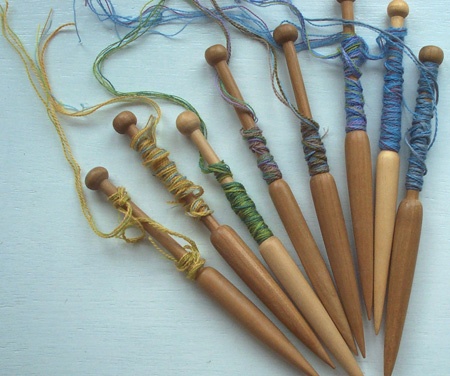About Tapestry 4
About Tapestry Continued/4
By the 15th century the profession was already well established with specialist designers heading teams of skilled weavers producing huge narrative tapestries to commission for the courts of Europe. The subjects of these were usually allegorical or Biblical or illustrated scenes from daily life. Less sophisticated and smaller scale tapestries were also produced all over northern Europe in homes and convents. The most famous tapestries from this early period are the series called 'The Lady and the Unicorn' (late 15th century, Musee Cluny, Paris) and 'The Apocalypse of Angers' (early to mid 15th century, Angers Castle), both in France and 'The Hunt of the Unicorn' in the Metropolitan Museum of Art in New York.
Here in the UK we can see really splendid examples of early European tapestries at the Victoria and Albert Museum in London and at the Burrell Collection in Glasgow. The Whitworth Gallery in Manchester has a fine collection of Peruvian textiles, including tapestries and there are examples of Coptic tapestries in many of our national and regional museums. It is rather strange that even though Britain was the foremost producer of top quality wool, there is no evidence of tapestry weaving in medieval times here, although monarchs and the aristocracy were enthusiastic collectors of tapestries. Later the relatively short-lived Soho and Mortlake manufactories were set up but only with the help of imported French and Flemish weavers.
Many historians and contemporary tapestry weavers argue that after about 1650 tapestry began to lose its vitality. There are two main reasons for this. Firstly the influence of the Renaissance with its emphasis on rationalism and realism meant that the popular art of the day was quite unsuitable for the medium of tapestry. Secondly the increasing pre-eminence of painting over the other plastic arts meant that famous painters like Raphael, were now designing tapestries with no particular understanding or appreciation of the medium. Consequently tapestry, which had been a monumental decorative art form in its own right, gradually became a costly and prestigious way of copying paintings, including woven 'gilded' frames. Large commercial studios were set up, the most famous being in France and Belgium to satisfy an expanding market. Designs were often woven many times over, which no doubt made commercial sense but meant a loss of freshness and originality. While this method of working required enormous technical virtuosity of the weavers, the freedom afforded their earlier counterparts to interpret and improvise within simple, strong designs was lost. The balanced relationship between design and making was disturbed leading often to technically brilliant but visually unsatisfactory pieces.

